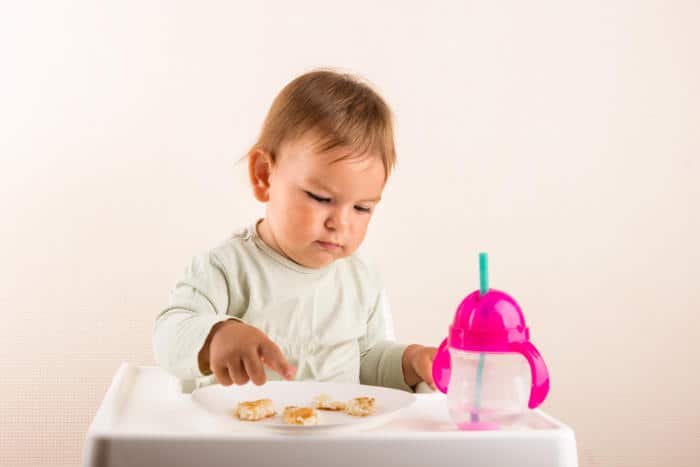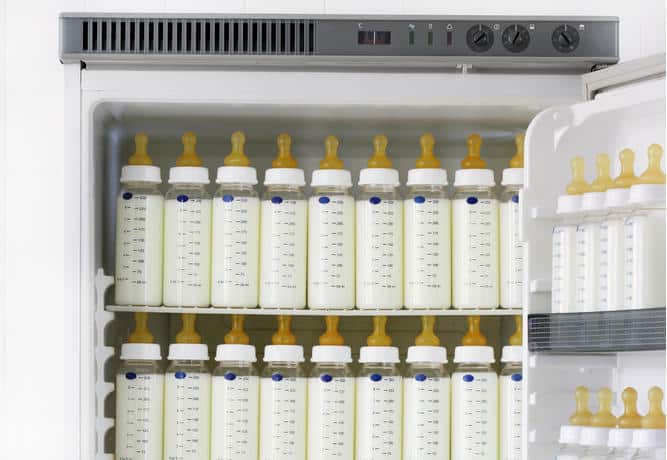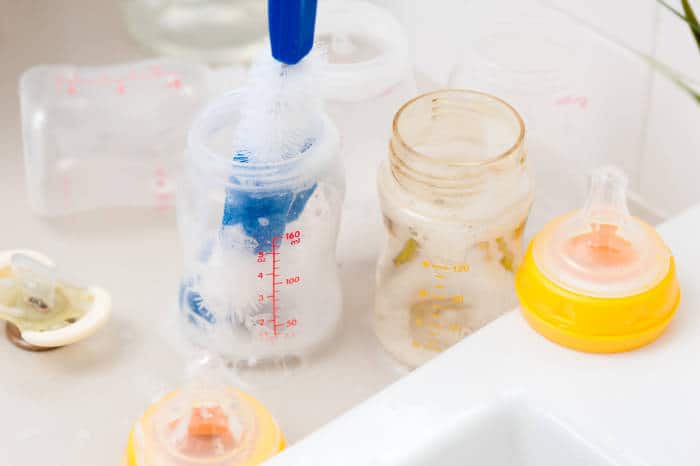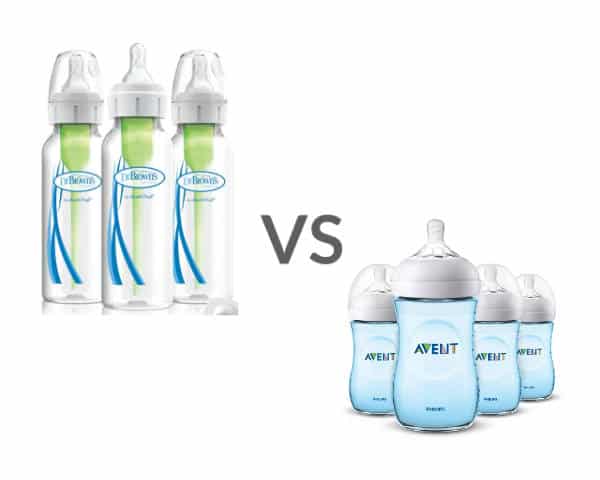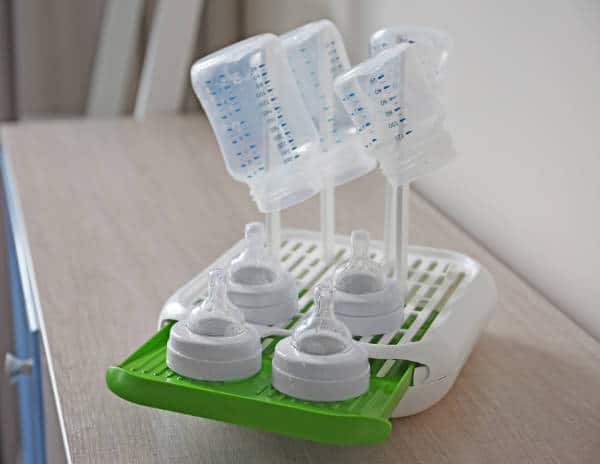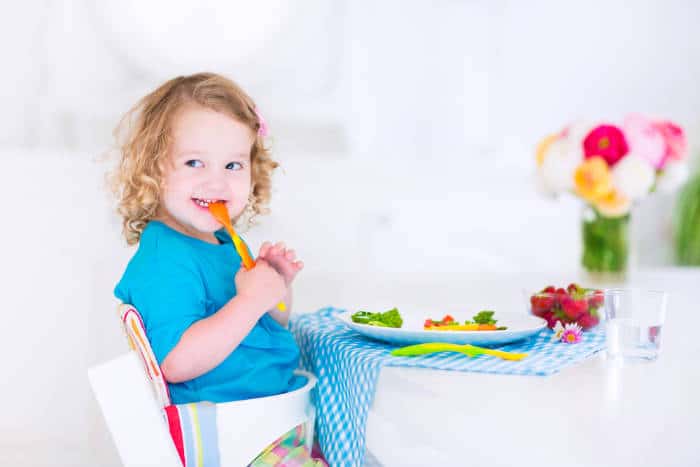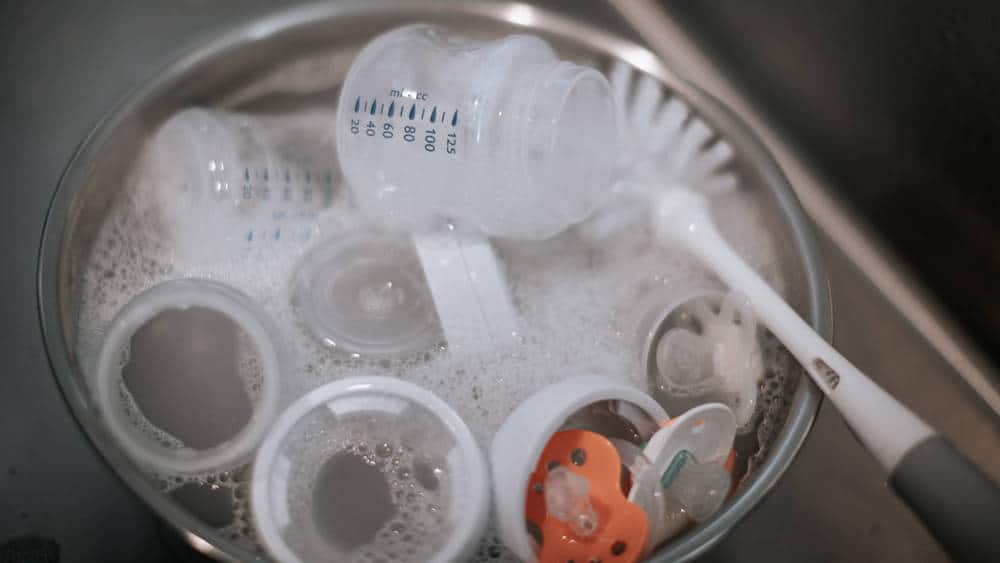Every parent and child experiences weaning differently. They do it in their own time with their own tips and tricks to get through it. However, the ideal timeframe for kids falls within the same window.
This is a highly charged topic as weaning often leads to feelings of sadness from the baby and the parents as the little one transitions over to the toddler stage. Aside from the bittersweet emotions mom or dad might experience, it’s also a stressful time for the child.
Bottles offer nutrition, yes, but they’re also comfort items for babies. Weaning disrupts the routine and can shake up your home for a few weeks as your baby adjusts to their new normal. To help, we’ve laid out the recommended timeline for weaning, as well as the basic approaches that most experts recommend.
Check it out below and be sure to stock up on sippy and straw cups for when it’s time to tell the baby bottle “toodaloo!” and break your child’s bottle habit – Experts say straw cups are better so take a look at this roundup we put together on the best straw cups for baby.
When should you wean your baby from bottles?
While your infant can probably try a cup around 6-9 months of age, the general consensus on switching from bottle to cup is that you should wait until 12-18 months. That’s not to say they can’t have both a cup and a bottle as you work up to bottle weaning.
Simply put, breast milk or formula should be the primary source of nutrition until age 1. They can absolutely supplement with solids and drink fluids from a cup, but there should still be a reliance on a bottle feeding session (or nursing) until that point.
Reasons that it’s important to wean your baby
- Excess milk consumption after age 1 can lead to your infant being anemic since they are drinking too many of their calories rather than getting important nutrients from solid food. Children are more prone to over-drinking when taking a bottle.
- Drinking from a bottle has also been linked to dental decay because of the way it pools in their mouth, allowing the sugar to sit on the teeth. This is why baby toothbrushes are a thing.
- Perhaps less recognized, there is a need to graduate from a bottle to ensure proper oral development. They need to practice the mechanisms necessary for drinking from a cup and reduce the sucking motion that bottles require. Relying on a bottle too long can also impact their dental structure and development.
- Drinking from bottles while lying down also contributes to more ear infections
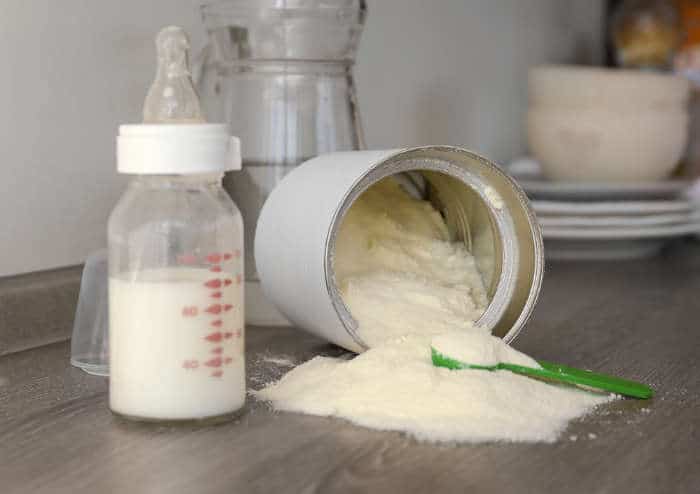
What should you wean your baby to? (sippy cups)
You can either wean to a regular cup or a sippy cup. Many parents choose the sippy cup for obvious reasons. It’s less messy and saves them from a headache. However, not all sippy cups are created equal.
Experts agree that sippy cups with straws are superior to the old-school spout cups most of us had when we were little. That’s because straw cups are better for preserving their oral structure and furthering their oral development. Plus, you don’t have to tackle another learning curve if you go straight to straw instead of spout to straw.
Feel free to refer back to our roundup of the best straw cups for baby for a more in-depth explanation of why straw cups are better. You’ll also find helpful reviews of some of the best cups on the market.
How can you wean your baby from bottles?
Ideally, you should start giving a bit of breast milk or formula in a sippy cup while your baby is younger. Introduce the idea when they hit that 6-9 month window so they can get used to the idea and develop the necessary motor skills (Don’t make the mistake of giving only water or juice in a cup. Milk should definitely be incorporated so it’s not such a shock when you want them to drink their milk from a cup).
When you get to crunch time (around 12-18 months), you can either kick the habit cold turkey or wean baby off slowly. Cold turkey will be rough, especially when you eliminate your little’s one morning bottle or nighttime bottle. They’ll protest the change and there will be crying, likely from both of you. However, if you choose to take all the bottles away, it will probably be over sooner.
On the other hand, you can try swapping bottle feeding for a cup of cow’s milk once or twice a day until you eliminate the bottle. You’ll still probably face some protest, but it won’t be as earth-shattering as dropping the bottle overnight.
Developmental factors that can affect weaning time
You may have seen the little pictures of infants on your little one’s baby food. Some say “supported sitter” or “crawler.” These are there to help you understand the developmental windows for optimal chewing and digestion of those first solid foods.
If your child hasn’t hit those, for whatever reason, you should consult with your child’s doctor because their weaning process may be delayed as well. Motor delays such as head or trunk control are common factors that contribute to the weaning timeline. Additionally, if your child doesn’t have teeth by one year of age, they won’t be able to consume many solids. That might also lead to delayed weaning. However, one of the main concerns of bottles, which is tooth decay, won’t be an issue.
As always, consult with a physician if your child is experiencing any delays.
What to expect in the days following weaning
Unfortunately, there will be some fussiness, mood swings, and frustration for everyone involved. Most parents say that giving up the bedtime bottle is the hardest. Naturally, babies crave that comfort before they drift into sleep. So, as the time comes to drop the last bottle, you might experience more wakefulness throughout the night and irritation in the morning.
Next up: Read this piece on how to get a baby to sleep without a bottle!


